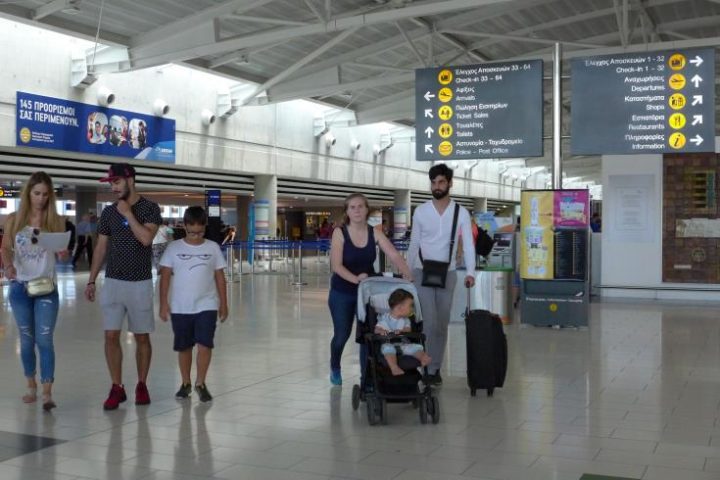Cyprus upgraded France, Spain and the Netherlands from its high-risk ‘red’ to the medium-risk ‘orange’ category, while keeping its safest ‘green’ category unchanged under the latest COVID travel risk assessment released on Monday.
The three EU member states, along with Uruguay, were pushed up to the medium-risk orange category, from which arrivals need to carry out a PCR test for COVID-19 beforehand.
After the island’s latest update on COVID-19 travel, only three EU countries remain in the safest green category – Hungary, Poland and the Czech Republic.
There are 21 countries in the orange category where a negative test is needed before departure to Cyprus, twelve of which are EU members.
The travel changes come into effect on Thursday, 30 September.
Cyprus is emerging from the fourth wave of coronavirus, where record infection rates reached four digits in July, powered by the more contagious Delta variant. August also saw a record 80 deaths.
Health authorities have contained a spike in cases to the low hundreds from a peak 1,152 daily infections in mid-July, mainly thanks to its high vaccination rate, with over 80% of the adult population receiving a COVID-19 jab.
On Sunday, the island’s health authority reported just 78 new COVID-19 cases.
Under the colour-coded system, there is no mandatory quarantine for tourists entering Cyprus from the EU.
Cyprus also keeps its doors open to fully vaccinated tourists to boost arrivals that plunged 84.1% last year, regardless of their country of origin.
Tourists allowed unconditional entry must have a COVID-19 vaccine approved by the European Medicines Agency (EMA) — Pfizer/BioNTech, AstraZeneca, Moderna or Janssen.
Russia’s SputnikV and China’s Sinopharm are also accepted vaccines by Cyprus.
Regardless of category, unvaccinated tourists staying for more than a week must get tested on the seventh day of their vacation.
GREEN
Under the COVID assessment scheme, low-risk countries currently classified in the green category are:
- EU Member States: 1) Hungary, 2) Poland, 3) Czech Republic.
- Third Countries: 1) Australia, 2) Jordan, 3) New Zealand, 4) Saudi Arabia.
ORANGE
Orange countries are those of higher risk than green.
Passengers must have undergone a PCR laboratory test within 72 hours before departure and have a certificate proving they tested negative for the virus.
- EU Member States: 1) France, 2) Denmark, 3) Greece, 4) Spain, 5) Italy, 6) Luxembourg, 7) Malta, 8) the Netherlands, 9) Portugal, 10) Slovakia, 11) Sweden, 12) Finland.
- Small States: 1) Andorra, 2) Vatican City.
- Members of the Schengen Area: 1) Iceland.
- Third Countries: 1) United Arab Emirates, 2) Qatar, 3) China (including Hong Kong, Macau), 4) Kuwait, 5) Bahrain, 6) Uruguay, 7) Singapore
RED
This category includes countries of higher risk than orange.
Passengers coming from red category countries are required: a) to prove a negative PCR test carried out under 72 hours before departure, and b) undergo another PCR test upon arrival in Cyprus. The cost of the test is charged to the individual.
- EU Member States: 1) Austria, 2) Belgium, 3) Bulgaria, 4) Germany, 5) Estonia, 6) Ireland, 7) Croatia, 8) Latvia, 9) Lithuania, 10) Romania, 11) Slovenia.
- Small States: 1) Monaco, 2) San Marino.
- Members of the Schengen Area: 1) Switzerland, 2) Liechtenstein, 3) Norway.
- Third Countries: Egypt, Armenia, Georgia, United States of America, United Kingdom, Japan, Israel, Canada, Belarus, Lebanon, South Korea, Ukraine, Russia, Serbia
GREY
Arrivals are allowed entry after acquiring special permission, only if they are Cypriot citizens or entitled to enter, such as people with a work permit.
Passengers must undergo a coronavirus test under 72 hours before their trip and have a certificate they tested negative for Covid-19.
Grey category passengers must remain in self-isolation for 14 days or seven if they choose to carry out another coronavirus PCR test with a negative result on the seventh day.










